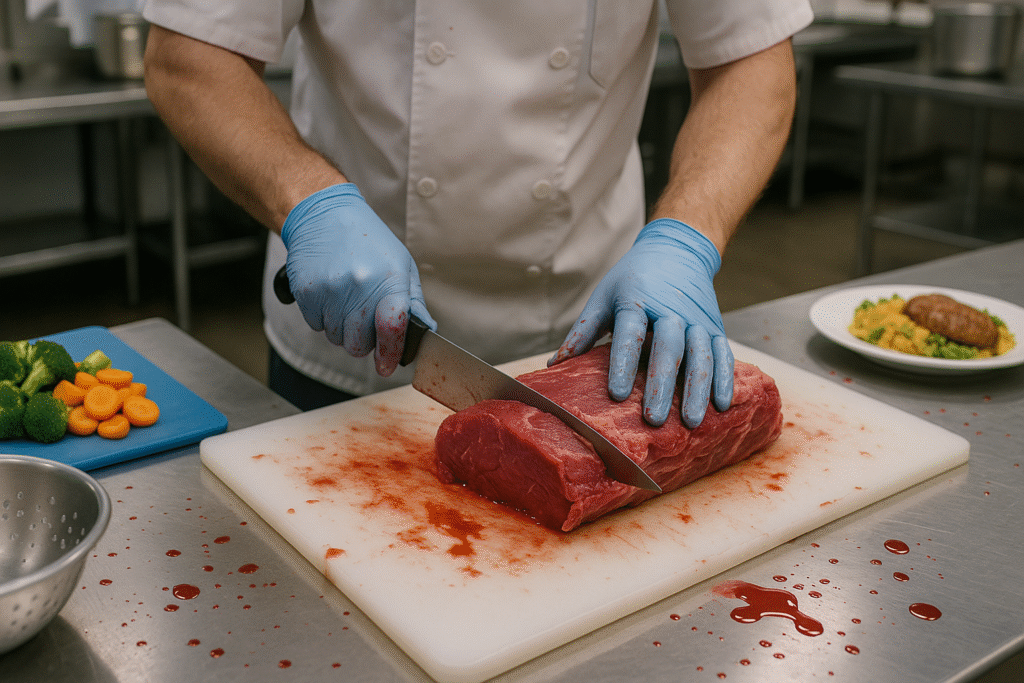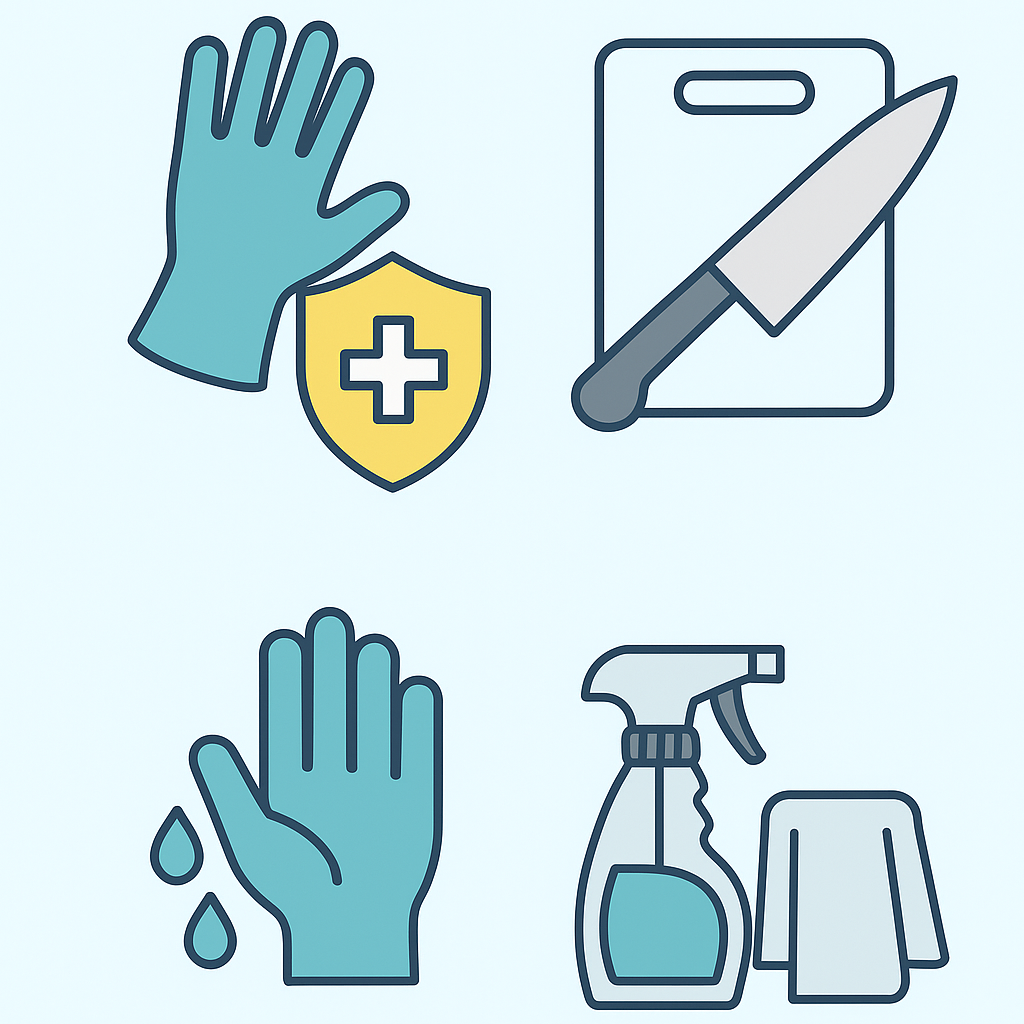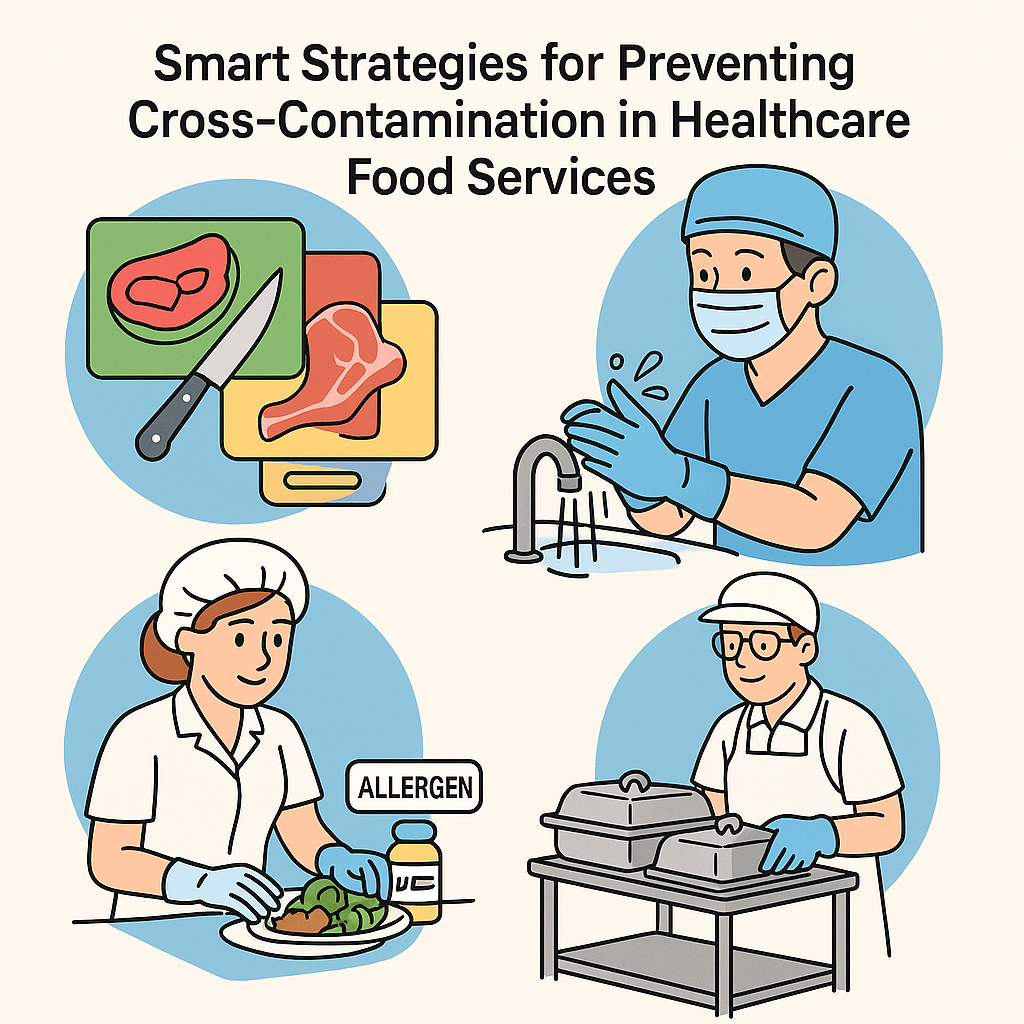Preventing cross-contamination in healthcare food service units is not just a regulatory requirement — it is a critical practice that protects immunocompromised patients from serious infections. Hospitals and healthcare facilities must maintain the highest hygiene standards, especially in their food preparation and distribution areas.

From kitchen to bedside, every stage of food handling carries the potential for contamination if protocols are not strictly followed. Let’s explore how your food service team can minimize risks and uphold patient safety.
- Why Preventing Cross-Contamination in Healthcare Food Service Units Matters
- Common Sources of Cross-Contamination in Healthcare Kitchens
- Smart Strategies for Preventing Cross-Contamination in Healthcare Food Services
- Real-World Example: Cross-Contamination Incident in a Hospital
- Internal and External Safety Compliance
- Visual Checklist: Safe Practices in Hospital Food Services
- Final Thoughts: Patient Safety Starts in the Kitchen
Why Preventing Cross-Contamination in Healthcare Food Service Units Matters
Cross-contamination can transmit harmful bacteria such as Salmonella, E. coli, and Listeria to vulnerable patients, triggering infections that are hard to treat in already weakened individuals.
In healthcare settings, where food may be tailored for special diets, allergies, or immune-sensitive conditions, one mistake can be fatal.
Common Sources of Cross-Contamination in Healthcare Kitchens
Even in well-run hospital kitchens, cross-contamination risks can stem from:
- Unclean utensils or surfaces
- Improper hand hygiene
- Incorrect storage of raw and cooked foods
- Improper glove usage or failure to change PPE
- Using the same cutting boards or knives for raw and ready-to-eat foods
Identifying these risks is the first step toward implementing effective control strategies.
Smart Strategies for Preventing Cross-Contamination in Healthcare Food Services

1. Color-Coded Systems for Utensils and Equipment
Use color-coded cutting boards, knives, and containers to separate raw meats, cooked foods, vegetables, and allergens. This simple system minimizes the chance of mixing high-risk items during prep.
2. Strict Hand Hygiene Protocols
All food service staff must wash hands:
- Before handling food
- After using the restroom
- After handling raw meat or cleaning chemicals
- After touching garbage or body parts (e.g., nose, hair)
Encourage handwashing with visible signage, training, and accessible stations.
3. Proper Use and Changing of PPE
Gloves, aprons, and hairnets are essential in healthcare food service units. However, PPE must be:
- Changed between tasks
- Never reused
- Disposed of in designated bins
Failing to change gloves after handling raw meat can quickly cause contamination of cooked items or utensils.
4. Separate Storage Areas for Raw and Cooked Foods
Keep raw meat, poultry, and seafood in separate refrigerators or, at minimum, stored on the lowest shelf to prevent dripping onto other items. Use sealed containers and label them clearly.
5. Dedicated Allergen Preparation Zones
Given the severity of allergic reactions in hospital settings, consider designating allergen-free zones for preparing meals for patients with food allergies or intolerances.
6. Train and Retrain Staff
Initial and ongoing food safety training is vital. Staff must understand:
- Cross-contamination risks
- Proper cleaning procedures
- Safe food handling techniques
Use resources from reputable sources like Health Canada and CFIA.
7. Cleaning and Sanitizing Schedules
Work surfaces, knives, trays, and carts must be sanitized after every use. Use hospital-grade, food-safe disinfectants. Maintain cleaning logs to track compliance.

8. Use of Technology for Monitoring
Implement digital systems or temperature sensors that log food storage conditions, helping identify issues before they pose a threat.
Real-World Example: Cross-Contamination Incident in a Hospital
A hospital in Ontario faced a serious outbreak of Listeria monocytogenes linked to improper handling of deli meats.
The meats were sliced in the same area used for raw poultry without proper sanitization, leading to multiple patient infections. This outbreak prompted a national revision of food handling policies in healthcare institutions (source).
Internal and External Safety Compliance
Ensure compliance with:
- Canada’s Food Retail and Food Services Code
- Hospital Accreditation Standards (e.g., Accreditation Canada)
- Internal OHSE protocols and regular audits
Hospital safety officers and food service managers should collaborate to document procedures, conduct routine inspections, and provide feedback to staff.
For internal training tools, refer to OHSE.ca for templates and food service safety resources.

Visual Checklist: Safe Practices in Hospital Food Services
| Task | Safe Practice |
|---|---|
| Storing meat | Store below other items in sealed containers |
| Cutting vegetables | Use separate, sanitized equipment |
| Handling allergens | Prep in isolated areas with separate tools |
| Transporting patient meals | Use covered trays and disinfected carts |
| Cleaning surfaces | Clean and sanitize between each use |
| Staff hygiene | Wash hands and change gloves often |
Final Thoughts: Patient Safety Starts in the Kitchen
Preventing cross-contamination in healthcare food service units is a shared responsibility. It involves the vigilance of food handlers, the guidance of OHSE professionals, and a hospital culture that values safety above speed. In a healthcare setting, contamination doesn’t just mean a bad review — it could mean a life lost.
Through training, standardized protocols, and consistent monitoring, you can ensure that every meal served supports healing — not harm.

No comments yet